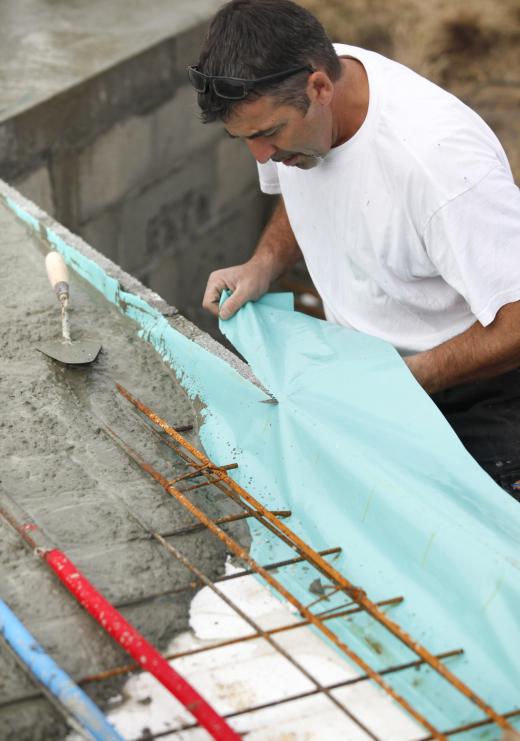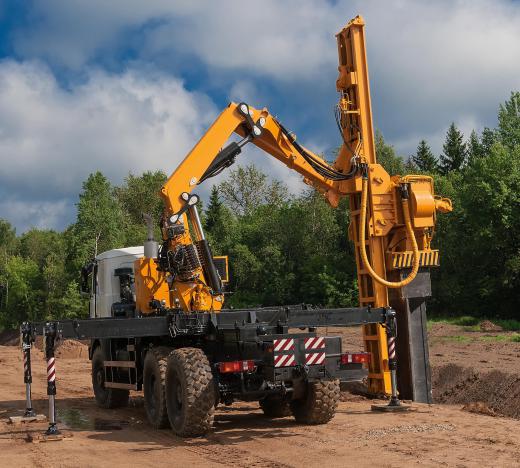The term "pile cap" may be used to describe a reinforced concrete slab constructed on top of a group of foundation piles to evenly displace or spread the load they are to carry. It can also refer to plastic or glass fiber caps placed over the tops of wooden pilings to protect them against rot and to stop birds nesting on the pilings. Most commonly, however, the term refers to the concrete slab that is cast on concrete or steel pilings once they have been suitably trimmed and prepared. These slabs offer a larger area for the construction of the columns they support and also help spread the weight of the structure over all pilings in a group allowing them to better support the load.
Pilings are used as foundations where the size of the building, poor soil quality at shallow depths, and intense site gradients preclude the use of conventional or raft foundations. Pilings are long lengths of solid or hollow steel, wood, or concrete either driven into the ground by a pile driver, placed in ready excavated cavities, or cast in situ in specially drilled holes. In the case of driven pile foundations, several piles are typically placed together in a group. A reinforced concrete slab is cast over the tops of the group to form a single structural element. This allows for the even distribution of the weight the pile group will carry so no individual member is over-stressed.

To construct a pile cap, pilings are first trimmed to ensure that the individual columns are all the same length and their tops are flush. An area around the piling group is then excavated to accommodate the timberwork that will form the boxing or mold for the concrete. The reinforcement for the slap will typically be built in the form of a steel cage that is then inserted into the cast box and fasten to the piling group, typically with a timber frame or cross member.

At this point, the concrete can be poured into the mold and allowed to cure. Once the concrete has cured correctly, the timber frame may be removed, leaving a slab of reinforced concrete joining the pilings. Now the rest the building's structural work may begin, using these slabs as foundation points.
The term "pile cap" may also refer to fiberglass or acrylic caps that are fitted onto the exposed ends of wooden piles particularly in marine applications. These protect the raw ends of the pilings from moisture ingress and resultant rotting of the wood. These caps often have pointed ends to prevent water fowl from nesting on top of the piles.
